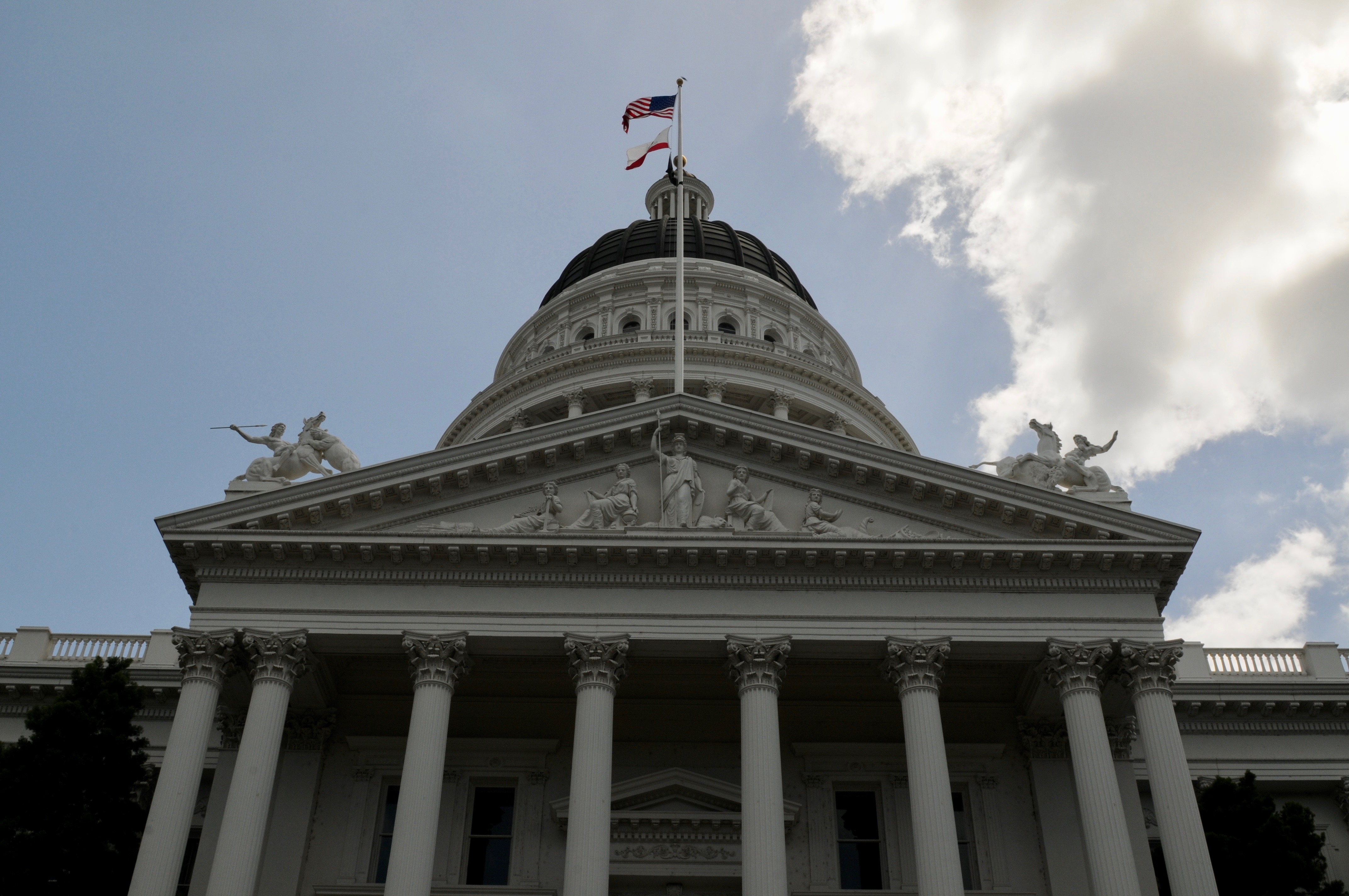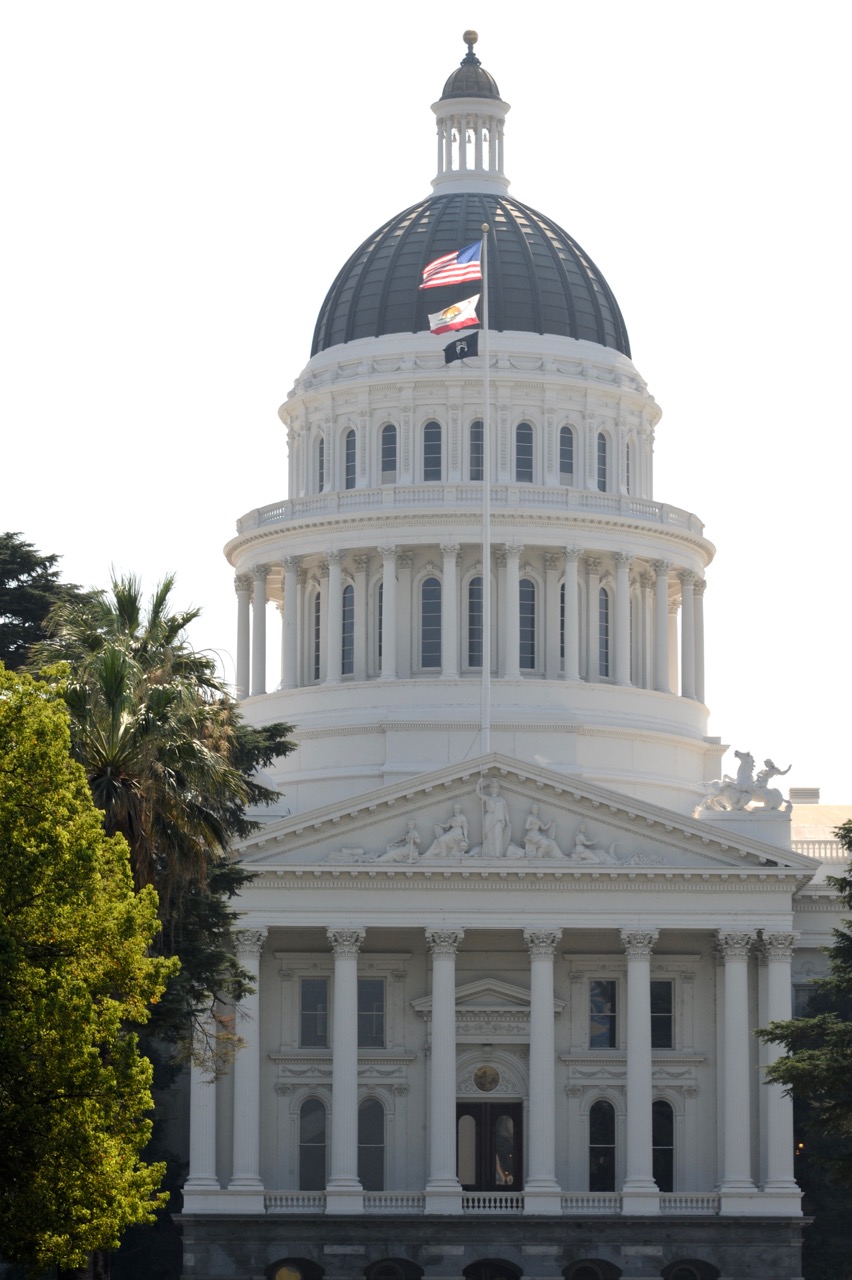
California State Capitol Dome. (Photo: Kevin Sanders for California Globe)
California’s Executive Branch: Governor
There is nothing in the California Constitution that grants the Governor the exclusive or paramount authority to appoint all executive officials
By Chris Micheli, November 11, 2021 2:45 am
While all of California’s constitutional officers are set forth in Article V of the state Constitution, the main focus in on the Governor. In fact, Section 1 of Article V provides that the executive power of state government is granted to the Governor. Nonetheless, the state’s courts have issued numerous decisions defining or even limiting the power granted to the executive branch generally and the Governor specifically.
For example, in contrast to the U.S. Constitution, there is nothing in the California Constitution, including the separation of powers doctrine, that grants the Governor or any other executive official, the exclusive or paramount authority to appoint all executive officials or that prohibits the Legislature from exercising such authority.
Unlike the federal constitution, the state Constitution embodies a structure of divided executive power, providing for the statewide election of not only the Governor and the Lt. Governor, but also of the Attorney General, the State Treasurer, the Secretary of State, the Controller, and the Superintendent of Public Instruction. Marine Forests Society v. California Coastal Commission (2005)36 Cal. 4th 1
The California Constitution and provisions of the California Government Code provide specific powers and duties to the Governor. And, state court decisions have provided guidance on a number of those provisions, which we briefly review below.
Indian Gaming
The state Constitution’s general prohibition on all casino-type gambling statewide prevents the Governor from having inherent executive authority to concur in the two-part determination of the U.S. Secretary of the Interior to take land into trust for purposes of gaming under the federal IGRA. In this case, the Governor lacked authority to concur in a federal determination allowing gaming on newly-acquired tribal land after a referendum in which the voters defeated the Legislature’s ratification of a tribal-state compact under IGRA.
The appellate court ruled that the Governor did not have implied power to concur because the state was not exercising express power granted to it. Moreover, the Governor could not rely on inherent authority, and the Governor’s authority regarding communication and information did not allow a concurrence in the federal official’s determination. Stand Up for California! v. State of California (2016) 6 Cal.App. 5th 686
California law permits the Governor’s concurrence in the Interior Secretary’s determination to allow class III gaming on Indian land taken into trust for an Indian tribe after the federal Indian Gaming Regulatory Act was enacted. The Governor’s historical practice of concurring in a range of other cooperative federalism schemes, and the Governor’s longstanding and legislatively enacted role as the state’s representative to the federal government, demonstrate that the Governor may concur in the U.S. Secretary’s determination without violating the Legislature’s prerogatives. United Auburn Indian Community of Auburn Rancheria v. Newsom (2020) 10 Cal. 5th 538
Public Education
In one case, the Governor was deemed to be a proper party defendant in public school students’ civil action seeking a declaration that statutes governing teacher tenure were unconstitutional, as public education was ultimately a state obligation and the supreme executive power of the state is vested in the Governor. Vergara v. State of California (2016) 246 Cal.App. 4th 619, rehearing denied
State Employees
Under the California Constitution, it is the Legislature, rather than the Governor, that generally possesses the ultimate authority to establish or revise the terms and conditions of state employment through legislative enactments. Moreover, any authority that the Governor or an executive branch entity, such as the Department of Personnel Administration, is entitled to exercise in this area emanates from the Legislature’s delegation of a portion of its legislative authority to the executive officials or entities through statutory enactments. Professional Engineers in California Government v. Schwarzenegger (2010) 50 Cal.4th 989
In addition, the broad language of the constitutional provision stating that the supreme executive power of California is vested in the Governor and that the Governor shall see that the law is faithfully executed does not, by itself, authorize the Governor to impose unpaid furloughs on state employees through an executive order in the face of a fiscal emergency.
Neither the authority granted to the Governor of California by the state Constitution nor the existing statutory provisions pertaining to the terms and conditions of state employment grants the Governor or the California Department of Personnel Administration the authority unilaterally to impose a mandatory unpaid furlough on state employees. Professional Engineers in California Government v. Schwarzenegger (2010) 50 Cal.4th 989
Criminal Law Cases
Under the Governor’s constitutional power to “grant a reprieve, pardon, and commutation,” a “commutation” is a reduction in punishment, a “pardon” is the remission of guilt and relief from the legal consequences of the crimes, and a “reprieve” is a temporary suspension of execution of sentence. The Governor’s clemency power is exclusive, and the Legislature has no power to grant a reprieve, pardon, or commutation.
Executive clemency is an ad hoc “act of grace” that may be granted for any reason without reference to any standards. Consistent with the separation of powers principle, pardon and commutation decisions have not traditionally been the business of courts and are rarely, if ever, appropriate subjects for judicial review. Santos v. Brown (2015) 238 Cal.App. 4th 398, review denied
Moreover, by its nature, the determination whether a prisoner should be released on parole is generally regarded as an executive branch decision. The decision, and the discretion implicit in it, are expressly committed to the executive branch of state government. In re Lugo (2008) 164 Cal.App. 4th 1522
The California Constitution authorizes the Governor to review the parole decisions of the Board of Parole Hearings in murder cases with indeterminate terms subject to the procedures provided by statute. In re Gray (2007) 151 Cal.App. 4th 379. Nonetheless, the executive branch of state government does not have the kind of virtually unlimited discretion over parole matters that it has over reprieves, parsons, and commutations. In re Ramirez (2001) 94 Cal.App. 4th 549
In the Governor’s review of a parole suitability determination, the Governor has discretion to be more stringent or cautious than the Board of Parole Hearings in determining whether a prisoner poses an unreasonable risk to public safety. The Governor’s parole suitability review process is presumed to be correctly carried out unless the contrary is established in appropriate proceedings. In re Lira (2014) 58 Cal. 4th 573
With regard to the decision as to a prisoner’s suitability for parole, the resolution of any conflicts in the evidence and the weight to be given the evidence are matters within the authority of the Governor. In re Smith (2003) 114 Cal.App. 4th 343. The courts have been clear that the California Legislature has no power to grant a reprieve, pardon, or commutation in light of Article III, Section 3 which provides for the separation of powers and Article V, Section 8 that expressly gives that power to the Governor. Way v. Superior Court (1977) 74 Cal.App. 3rd 165
Line-Item Veto Authority
As opposed to the U.S. President, California’s Governor has the power to reduce or eliminate appropriations of funding passed by the Legislature. However, that power is not absolute. For example, the Governor did violate the designation of powers set out in Article IV, Section 1 and Article V, Section 1 by using his line-item veto authority to further reduce funding levels set forth in midyear spending reductions because the legislative acts reducing the appropriations remained and are themselves appropriations for purposes of a line-item veto. St. John’s Well Child & Family Center v. Schwarzenegger (2010) 50 Cal. 4th 960
Appointments and Confirmations
Article V, Section 5(b), which sets forth the requirements for confirmation by the Legislature of the Governor’s nominee to fill a vacancy in the office of Treasurer, requires the confirmation by both houses of the Legislature unless it fails to act on a nomination within 90 days, in which case the nominee is deemed to be confirmed under the second sentence of the provisions. Thus, where the Assembly voted to confirm a nominee to Treasurer, but the Senate voted to deny confirmation, the nomination was rejected.
This statutory construction fulfills both the major and minor premises of the section that both houses must confirm a nominee, but that the nominee may not be rejected merely by the Legislature’s failure to vote on the nomination. The language of the provision that the nominee will be deemed to have been confirmed if “both” houses do not refuse or approve the nomination was meant to refer only to inaction by both houses, and not to inconsistent action by the two houses or inaction by one house alone. Lungren v. Deukmejian (1988) 45 Cal. 3rd 727
- Court-ordered Child Support - January 6, 2026
- Third-party Claims - January 6, 2026
- New Trials in California - January 5, 2026




